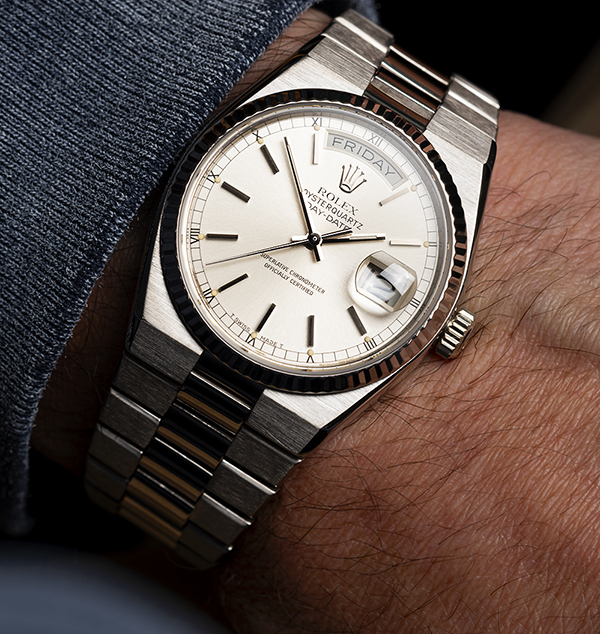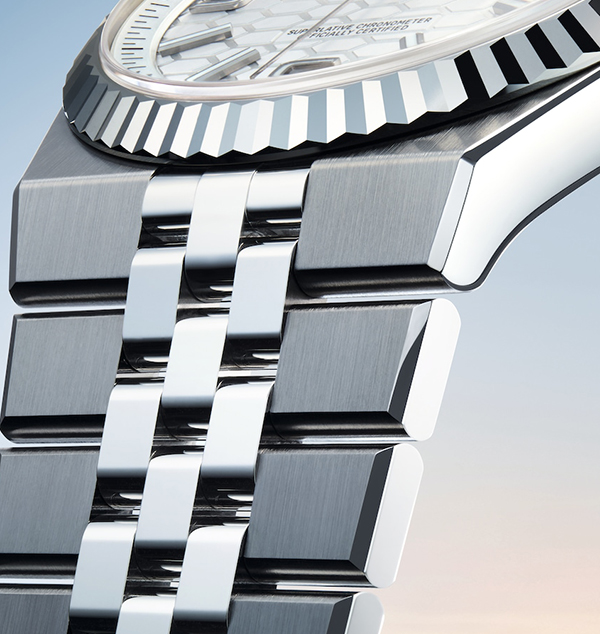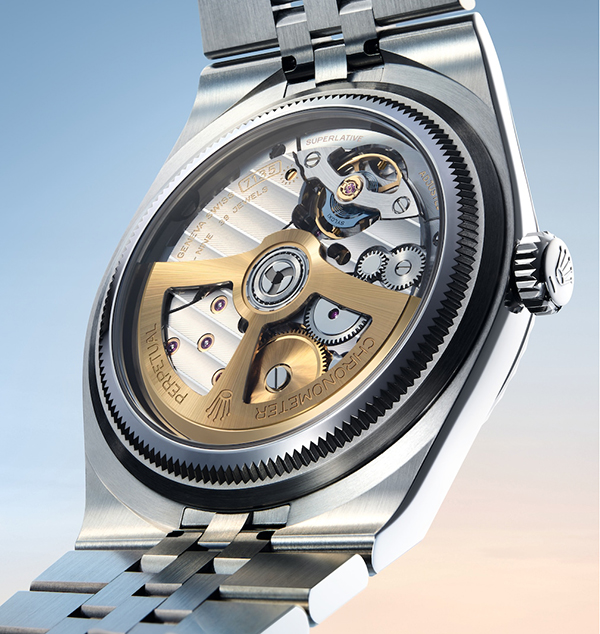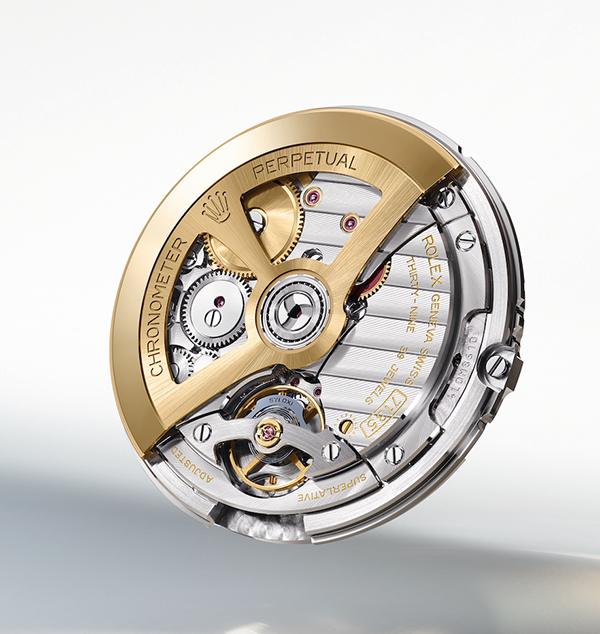The Land-Dweller – A Radical New Rolex

What is the new Rolex Land-Dweller? Perhaps the most interesting and unexpected watch to have been presented at Watches and Wonders 2025 in Geneva. The model has a completely new style, with integrated case and bracelet, and hosts a thoroughly new direction in movement technology, being fitted with the new Rolex Dynapulse escapement. This is a low-friction, low-mass dual-wheel system made of monocrystalline silicon. The watch is sensational, and promises to be an extremely popular addition to the Rolex cataogue.
What does "integrated" case and bracelet mean? For comparison think of the Audemars Piguet Royal Oak or the Patek Philippe Nautilus. The bracelet and case merge – a continuum of steel or precious metal. Rolex Oyster watches normally have a distinct "head", which is the watch case proper, and a separate bracelet (or rubber/leather strap). The two parts, although solidly attached, are clearly separate elements. In the integrated Land-Dweller, the planar elements of the new Flat Jubilee bracelet continue all the way into the edge of the fluted white Rolesor (white gold) bezel. At the same time the angular planes of the watch case tilt down to meet the flow of the bracelet.

The spirit of this style is not new for Rolex, but it's been over half a century since they first explored this aesthetic direction. When you look at the rare Rolex Datejust reference 1630 from 1974, and the subsequent Oysterquartz from 1977, you'll immediately see the resemblance. The look also has links to the original Rolex Quartz, ref. 5100, aka "The Texan", from 1969. In all these models, the lean angular look is a strong part of the design.

But the Land-Dweller is also thoroughly new, with its own identity. The mirror-polished central links in the Flat Jubilee bracelet are raised up by a fraction of a millimetre, adding to their specular quality. Surprisingly, this also adds to the longevity of the watch – the smaller mirror-finished elements will tend to scatter the appearance of the inevitable small scuffs and scratches, while also acting as a physical bumper to catch any knocks ahead of the lower, satin grained surfaces. The raised area also affords more scope for refinishing than a purely flat bracelet, meaning your Land-Dweller can be kept looking perfect for longer.

The case-back is clear sapphire, something highly unusual for Rolex. Their first Oyster cases with sapphire back were in 2023: the white gold Cosmograph Daytona 126529LN (100th Anniversary of Le Mans) and the platinum Cosmograph Daytona 126506 (60th Anniversary of the Daytona).
Behind the Land-Dweller's sapphire back, you can admire a new Rolex movement – calibre 7135. This is based on the 7140 from 2023, but with some very important differences. The new Land-Dweller movement beats at 36,000 vibrations per hour. This high beat is normally considered very challenging. In fact, when Rolex used to source movements from Zenith in the 1980s, they reduced the beat of the El Primero movement from 36,000 down to 28,800 vph. Why? The high velocity parts would shed their lubrication, and the system requires an unusually strong mainspring and balance spring, which without other corrections could lead to premature wear in the movement.

However, with the Land-Dweller and its calibre 7135, Rolex has resolved all these problems: it uses a low-mass, low inertia, high-efficiency escapment of a completely new design. At the same time they have managed to retain the 66 hour run time of the previous "standard" calibre 7140. Just to repeat that: to improve stable timekeeping, they increased the beat to a previously impractical level, while retaining a full 66 hour duration. This is an exceptional result.

The secret to the Land-Dweller's impressive technical capacity is its new escapement, the Rolex Dynapulse. Most watch escapements are made of hard steel with ruby wear surfaces. This is good if you use classical manufacturing techniques. The Rolex Dynapulse is made of silicon: chemically etched from purest monocrystalline wafers of this element. This is the same process used to make the nanometre features in computer microchips. The precision of this process can produce features much, much smaller than the wavelength of light.
Rolex has therefore been free to come up with a completely unusual geometry for this new escapement, with fluid-like, almost organic shapes to the gear teeth, which do the various jobs of locking, meshing, and supplying impulse (the tiny beats of energy fed back into the oscillator).
The escapement is a dual-wheel type, and it gives tangential impulse with very little sliding of the various parts. Watchmakers have been trying to avoid or reduce sliding friction for 700 years, because it is the biggest obstacle to stable timekeeping. The problem was partly solved in marine timekeepers of the 19th and 20th century, but their delicate "detent escapements" are unsuitable for wristwatches. in the 1970s, the Englishman George Daniels finally worked out how to apply tangential rather than sliding impulse, finally getting it into a commercial wristwatch in 1999, with many Swiss companies now producing variations on the idea.
The Rolex Dynapulse solves the problem differently. People have called this a "natural escapement", after Breguet's 1789 échappement naturel. But this is not correct. Breguet caused the twin escape wheels to impulse the balance directly. The Dynapulse applies impulses via a central oscillating lever. It is certainly a dual-wheel escapement, making it look at first glance like the Breguet system. But the Breguet system is fundamentally flawed, while the Rolex escapement is not.
In any double-wheel escapement, the driven, end-most wheel in the system, is basically free to flutter or float when not actively engaged. In Breguet's escapement, the escapement had to accommodate this free play, creating uncertainty in the timekeeping. In the Dynapulse, there is still a possibility for the far wheel to flutter, but it is absorbed and locked out of play by the central lever away from the moment that wheel needs to communicate with the sensitive oscillating balance.
It gives tangential impulse, it is light, it is non-magnetic, it is made of a low-friction material needing a tiny fraction of the normal amount of lubrication; this is simply an exceptional escapement. One might say inspired.
Simply put, the Land-Dweller is a radical take on contemporary horology. It's produced in a range of styles and prices, from the 36mm model in steel, at £12,250 rrp, to a platinum edition with diamond-set bezel at £100,450. Demand for this good-looking and creative new watch promises to be off the charts.
All images for this news article are courtesy of the Rolex Watch Company press room, except the photo of the Oysterquartz, from the Watch Club archive.
